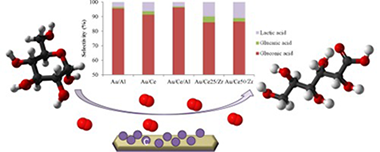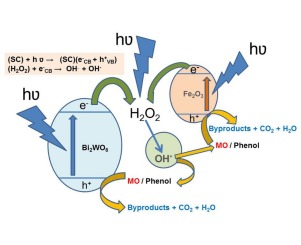Artículos SCI
2017
2017
Materiales Coloidales
Comprehensive and Systematic Analysis of the Immunocompatibility of Polyelectrolyte Capsules
Zyuzin, MV; Diez, P; Goldsmith, M; Carregal-Romero, S; Teodosio, C; Rejman, J; Feliu, N; Escudero, A; Almendral, MJ; Linne, U; Peer, D; Fuentes, M; Parak, WJBioconjugate Chemistry, 28 (2017) 556-564
Show abstract ▽

The immunocompability of polyelectrolyte capsules synthesized by layer-by-layer deposition has been investigated. Capsules of different architecture and composed of either non-degradable or biodegradable polymers, with either positively or negatively charged outer surface, and with micrometer size, have been used, and the capsule uptake by different cell lines has been studied and quantified. Immunocompatibility studies were performed with peripheral blood mononuclear cells (PBMCs). Data demonstrate that incubation with capsules, at concentrations relevant for practical applications, did not result in a reduced viability of cells, as it did not show an increased apoptosis. Presence of capsules also did not result in an increased expression of TNF-α, as detected with antibody staining, as well as at mRNA level. It also did not result in increased expression of IL-6, as detected at mRNA level. These results indicate that the polyelectrolyte capsules used in this study are immunocompatible.
Febrero, 2017 | DOI: 10.1021/acs.bioconjchem.6b00657
Química de Superficies y Catálisis
Gold catalysts screening in base-free aerobic oxidation of glucose to gluconic acid
Megias-Sayago, C.; Ivanova, S.; Lopez-Cartes, C.; Centeno, M.A.; Odriozola, J.A.Catalysis Today, 279 (2017) 148-154
Show abstract ▽

Base-free aerobic oxidation of glucose in presence of Au/Al2O3, Au/CeO2, Au/CeO2(20 wt%)/Al2O3, Au/CeO2(25 wt%)/ZrO2 and Au/CeO2(50 wt%)/ZrO2 catalysts using molecular oxygen at atmospheric pressure is studied. Within the whole series high conversion and selectivity to gluconic acid are observed after 18 h of reaction at 120 degrees C. The activity and especially the selectivity changes are related to the support nature in a way that the higher the Lewis acidity of the support the lower the selectivity to gluconic acid and the higher the production of lactic acid. The highest yield to gluconic acid is obtained over Au/Al2O3 for which the influence of the reaction time, temperature and stirring rate are further evaluated and discussed.
Enero, 2017 | DOI: 10.1016/j.cattod.2016.06.046
Reactividad de Sólidos
Microcalorimetry: A powerful tool for quantitative analysis of aging hardening response of Cu-Ni-Sn alloys
Donoso, E; Dianez, MJ; Perejon, A; Sanchez-Jimenez, PE; Perez-Maqueda, LA; Sayagues, MJ; Criado, JMJournal of alloys and compounds, 694 (2017) 710-714
Show abstract ▽

The method for the deconvolution of overlapping DSC peaks here proposed has been used by the first time for the quantitative determination of the enthalpies associated to the phase transitions undergone during the aging of an alloy. They have been determined the enthalpies evolved along the first and the second overlapping DSC traces of Cu-10 wt%Ni-5.5 wt%Sn alloy, which are associated, respectively, to the spinodal decomposition of the alloy and the segregation of a DO22 (CuxNi1-x)(3)Sn tetragonal phase. The fraction of the DO22 phase (responsible of the aging hardening of this alloy) has been successfully determined from DSC as a function of the annealing treatment, while TEM and XRD failed for this purpose. It has been demonstrated that a threshold higher than 50% of crystallization of the DO22 phase is required for achieving a significant increase of the hardness as a function of the crystallization percentage. These results suggest that microcalorimetric measurement can be a powerful tool to establish quantitative relationships between the mechanical, electrical or functional properties of alloys and their structural changes undergone by aging.
Enero, 2017 | DOI: 10.1016/j.jallcom.2016.10.060
Fotocatálisis Heterogénea: Aplicaciones
Mixed alpha-Fe2O3/Bi2WO6 oxides for photoassisted hetero-Fenton degradation of Methyl Orange and Phenol
Jaramillo-Paez, C; Navio, JA; Hidalgo, MC; Bouziani, A; El Azzouzi, MJournal of Photochemistry and Photobiology A-Chemistry, 332 (2017) 521-533
Show abstract ▽

Mixed oxides, alpha-Fe2O3/Bi2WO6, were prepared using a mechanical mixing procedure by adding to the Bi2WO6 previously obtained by hydrothermal method the corresponding amount of a prepared alpha-Fe2O3, the latter obtained by thermal decomposition of Fe(NO3)center dot 9H(2)O. The physicochemical surface, structural, morphological characteristics and optical properties of the samples, single and mixed, were determined by BET, XRD, FE-SEM, XPS and UV-vis diffuse reflectance spectroscopy. UV-vis diffuse reflectance spectra showed that incorporating a 5%wt. of alpha-Fe2O3 to the corresponding amount of Bi2WO6 sample broadened the visible light absorption of Bi2WO6 as expected. The photocatalytic activity, of single and mixed catalysts, to degrade a selected dye such as Methyl Orange (MO) as well as the transparent substrate Phenol (Ph) was studied, in aqueous medium (pH 5.5) under UV and sun-like illumination conditions in the absence and presence of H2O2. In the present study the use of a alpha-Fe2O3/Bi2WO6/H2O2 system demonstrate much higher photocatalytic efficiency to degrade both MO and Ph than pristine Bi2WO6 or alpha-Fe2O3, single or mixed. Using the system alpha-Fe2O3/Bi2WO6/H2O2, around 85% of MO was degraded in 60 min under sun-like illumination whereas 100% was degraded in 60 min under UV-illumination. However, just around 30% of Ph was degraded in 120 min in the alpha-Fe2O3/Bi2WO6/H2O2 system under sun-like illumination whereas around a 95% was degraded in 90 min under UV-illumination. Under UV illumination, the generation of hydroxyl radicals is favorable; whereas under sun-like illumination, only the small fraction of the UV can produces the center dot OH. Under illumination, the H2O2 could react with photoinduced electrons from the photocatalysts leading to the production of hydroxyl radicals (center dot OH).
Enero, 2017 | DOI: 10.1016/j.jphotochem.2016.09.031
Analytical investigation of Mudejar polychrome on the carpentry in the Casa de Pilatos palace in Seville using non-destructive XRF and complementary techniques
Garrote, MA; Robador, MD; Perez-Rodriguez, JLSpectrochimica Acta Part A-Molecular and Biomolecular Spectroscopy, 173 (2017) 279-291
Show abstract ▽

The pigments, execution technique and repainting used on the polychrome wood ceilings and doors in the Casa de Photos (Seville, Spain) were studied using portable X-ray fluorescence equipment. Cross-sections of small samples were also analysed by optical microscopy, SEM with EDX analysis, micro-Raman and micro-infrared spectroscopy and X-ray diffraction. These carpentry works are magnificent examples of the Mudejar art made in Spain in the early 16th century. Portable X-ray fluorescence gave good information on the different components of the polychrome. The SEM-EDX study of the surfaces of small samples gave information on their components and also characterized the compounds that had been deposited or formed by environmental contamination or by the alteration of some pigments. The SEM-EDX study of cross-sections facilitated the characterization of all layers and pigments from the support to the most external layer. The following pigments were characterized: red (cinnabar/vermillion, lead oxide, iron oxides and orpiment/realgar), black (carbon black), white (white lead and titanium barium white), yellow-orange-red-brown (orpiment/realgar and iron oxides), green (chromium oxide), blue (indigo blue and ultramarineblue), and gilding (gold leaf on bole). False gold, bronze and brass were also found. The pigments were applied with the oil painting technique over a support layer that had been primed with animal glue. This support layer was gypsum in some cases and white lead in others. This study is essential to the polychrome conservation of the studied artwork, and it will help clarify uncertainties in the history and painting of Mudejar art.
Enero, 2017 | DOI: 10.1016/j.saa.2016.09.027
- ‹ anterior
- 202 of 420
- siguiente ›














